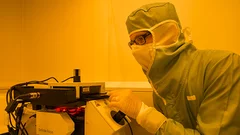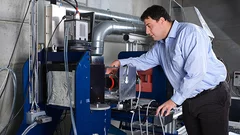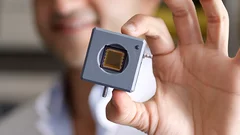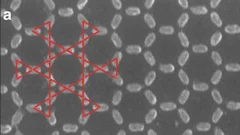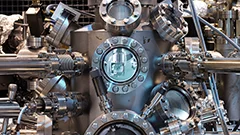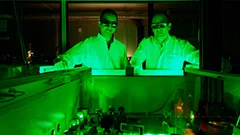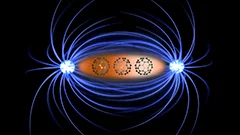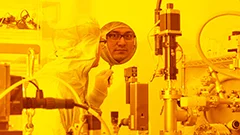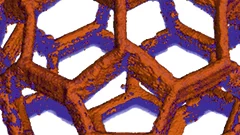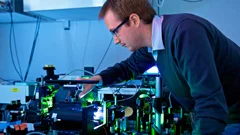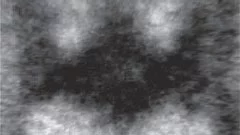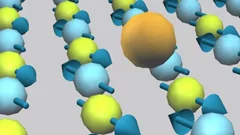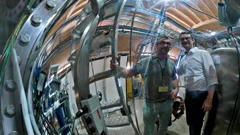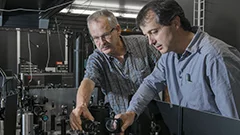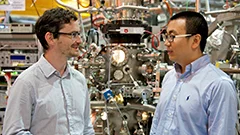Future Technologies
The manifold characteristics of materials are determined by what type of atoms they are made of, how these atoms are arranged, and how they move. In the research area Future Technologies, scientists at the Paul Scherrer Institute are trying to clarify this link between the internal structure and the observable properties of different materials. They want to use this knowledge as fundamental principles for new applications – whether in medicine, information technology or energy generation and storage – or to explore innovative manufacturing processes for industry.
Find out more at: Future Technologies
New particle could form the basis of energy-saving electronics
The Weyl fermion, just discovered in the past year, moves through materials practically without resistance. Now researchers are showing how it could be put to use in electronic components.
A micrometer-sized model of the Matterhorn
Researchers at the Paul Scherrer Institute have produced large numbers of detailed models of the Matterhorn, each one less than a tenth of a millimetre in size. With this, they demonstrated how 3-D objects so delicate could be mass-produced. Materials whose surface is covered with a pattern of such tiny 3-D structures often have special properties, which could for example help to reduce the wear and tear of machine parts.
Slowed down current could point the way to energy-saving computers
Computers and other electronic devices account for a substantial portion of worldwide energy use. With today’s technologies, it is not possible to reduce this energy consumption significantly any further; chips in the energy-saving electronics of the future will hence have to be made from novel materials. Researchers at the Paul Scherrer Institute PSI have now found important clues in the search for such materials.
Neutrons reveal distribution of flux-tube islands
Usually, superconductors expel magnetic fields. In type II superconductors, however, thin channels – so-called flux tubes – are formed. The magnetic field is guided through these tubes while the rest of the material remains field-free and superconducting. In the metal niobium, the flux tubes bunch together into small islands that create complex patterns similar to those found in other fields of nature. A team of researchers from PSI and TU München were the first to conduct neutron experiments to study these patterns in niobium and determine the distribution of the islands in detail.
Electron’s cousin discovered after eighty-six-year search
In a series of experiments at the Swiss Light Source SLS, physicists from the Paul Scherrer Institute PSI have discovered a particle, the existence of which was predicted eighty-six years ago. It is a member of the particle family that also includes the electron, the carrier of electrical currents. The particle now discovered is massless and can exist only within a special class of materials known as Weyl semi-metals.
Structure of concrete disease
solved
When bridges, dam walls and other structures made of concrete are streaked with dark cracks after a few decades, the culprit is the so-called the concrete disease. Researchers from the Paul Scherrer Institute PSI and Empa have now solved the structure of the material produced in these cracks at atomic level - and have thereby discovered a previously unknown crystalline arrangement of the atoms.
X-ray research in the UFO
At first glance, the Swiss Light Source SLS stands out as a striking building. The inside reveals a setting of cutting-edge research. A journey through a world where electrons race a slalom course and X-rays help decode proteins.
Put in perspective
Researchers from the Paul Scherrer Institute PSI have succeeded in using commercially available camera technology to visualise terahertz light. In doing so, they are enabling a low-cost alternative to the procedure available to date, whilst simultaneously increasing the comparative image resolution by a factor of 25. The special properties of terahertz light make it potentially advantageous for many applications. At PSI, it will be used for the experiments on the X-ray free-electron laser SwissFEL.
Tiny magnets mimic steam, water and ice
Researchers at the Paul Scherrer Institute (PSI) created a synthetic material out of 1 billion tiny magnets. Astonishingly, it now appears that the magnetic properties of this so-called metamaterial change with the temperature, so that it can take on different states; just like water has a gaseous, liquid and a solid state.
In search of the smallest bit
For increasingly compact storage media, magnetic areas – the memory bits – also need to become smaller and smaller. But just how small can a magnet be? Frithjof Nolting and his colleagues at the Paul Scherrer Institute investigate the surprising phenomena in the field of nanomagnetism.
Terahertz laser light focused to the extreme
Researchers from the Paul Scherrer Institute have managed to focus the light pulse terahertz laser at the limit of what is permitted by the classical laws of physics. This opens up new possibilities for studying the properties of materials.
Magnets made of non-magnetic metals
For the first time, an international research team has demonstrated how to generate magnetism in metals that aren’t naturally magnetic, such as copper. The discovery could help develop novel magnets for a wide range of technical applications. Crucial measurements to understand this phenomenon were carried out at PSI à the only place where magnetic processes inside materials can be studied in sufficient detail.
Seven nanometres for the electronics of the future
Researchers from the Paul Scherrer Institute have succeeded in creating regular patterns in a semiconductor material that are sixteen times smaller than in today’s computer chips. As a result, they have taken an important step closer towards even smaller computer components. Industry envisages structures on this scale as the standard for the year 2028.
Nanometres in 3D
Scientists at the Paul Scherrer Institute and ETH Zurich have created 3D images of tiny objects showing details down to 25 nanometres. In addition to the shape, the scientists determined how particular chemical elements were distributed in their sample and whether these elements were in a chemical compound or in their pure state.
New laser for computer chips
Germanium-Zinn-Halbleiterlaser lässt sich direkt auf Siliziumchips aufbringenWinzige Laser, die in Computerchips aus Silizium eingebaut werden, sollen in Zukunft die Kommunikation innerhalb der Chips und zwischen verschiedenen Bauteilen eines Computers beschleunigen. Lange suchten Experten nach einem dafür geeigneten Lasermaterial, das sich mit dem Fertigungsprozess von Siliziumchips vereinbaren lässt. Wissenschaftler des Forschungszentrums Jülich und des Paul Scherrer Instituts PSI haben hier nun einen wichtigen Fortschritt erzielt.This news release is only available in German.
Batman lights the way to compact data storage
Researchers at the Paul Scherrer Institute (PSI) have succeeded in switching tiny, magnetic structures using laser light and tracking the change over time. In the process, a nanometre-sized area bizarrely reminiscent of the Batman logo appeared. The research results could render data storage on hard drives faster, more compact and more efficient.
Puzzling new behaviour observed in high-temperature superconductors
New effect might be important for emergence of High-Temperature SuperconductivityAn international team of researchers has observed a new, unexpected kind of behaviour in copper-based high-temperature superconductors. Explaining the new phenomenon à an unexpected form of collective movement of the electrical charges in the material à poses a major challenge for the researchers. A success in explaining the phenomenon might be an important step toward understanding high-temperature superconductivity in general. The crucial experiments were conducted at the Paul Scherrer Institute.
Useful for spintronics: Big surprises in a thin surface region
The need for ever faster and more efficient electronic devices is growing rapidly, and thus the demand for new materials with new properties. Oxides, especially ones based on strontium titanate (SrTiO3), play an important role here. A collaborative project headed by scientists from the PSI has now revealed properties of strontium titanate that make it an important base material for applications in spintronics.
New material generated with light
PSI researchers garner experience for SwissFEL experimentsAided by short laser flashes, researchers at the Paul Scherrer Institute have managed to temporarily change a material’s properties to such a degree that they have à to a certain extent àcreated a new material. This was done using the x-ray laser LCLS in California. Once the PSI x-ray laser SwissFEL is up and running, experiments of this kind will also be possible at PSI.
Insulator makes electrons move in an ordered way
Researchers at the PSI, the EPFL and the Chinese Academy of Science, have proven that the material SmB6 shows all the properties of a so called topological insulator à a material with electric currents flowing along its surface with all of them being polarized. Here, the property is very robust, i.e. the only current that can flow is spin polarized and is not easily destroyed by small irregularities in the structure or composition of the material. Spin polarized currents are necessary for spintronics, electronics using the electrons’ spin.

